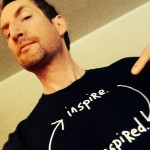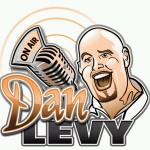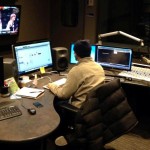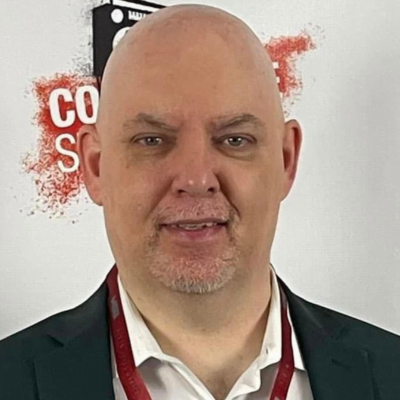I’ve written a few times over the past year about the importance of quality imaging and production for sports radio stations, and it’s a subject that I am passionate about and believe deserves attention.
During the past few weeks I’ve had my ear on sports radio stations all across the country. The one thing I hear taking place in multiple places (that I’m not sure is necessarily a good thing) is a lack of creativity and simplification of messaging. Promos, ID’s and liners which include actualities, funny clips, and big sounds are being reduced in favor of simple short pieces with little activity behind them.
I understand that there are certain expectations for particular brands, and there’s value in keeping things simple. I’m not here to tell you that following the rules and reinforcing a brand’s identity doesn’t have its place. It certainly does. But does that mean that we can’t attempt to find newer ways to add some flavor and create additional excitement for our brands?
In a time where audio consumption is more splintered than ever, and numerous media brands are taking risks to attract larger audiences, is the answer to building bonds with an audience to stifle the creativity of some radio’s best thinkers?
One of the most overlooked and undervalued positions in sports radio is the Imaging Director. A good one can bring an energy to your brand that connects with your talent and audience. A bad one can absolutely crush you and make your brand feel old, stale, and unimportant. Find yourself a great one, and your audience will be speaking the language of the brand without even recognizing it.
If I’ve learned one thing from running brands, conducting research, and interacting with listeners, it’s that great imaging does connect. Sports is fun, and anytime you’re not in content, and have a chance to re-establish that power of fun, it’s important to do so.
As a programmer, I always believed that it was my responsibility to foster an environment which allowed people to be creative. Developing a relationship and understanding with the Imaging Director is critical, because the way they bring the brand to life through your speakers is going to be a reflection of the way you communicate your vision to them.
Let’s be honest, people who work in this industry don’t do it because of the fame and fortune it provides. Sure there are some personalities who are the exception to the rule, but most of the supporting cast behind the scenes choose this line of work because they love it, connect to it, and appreciate the opportunity to have a platform which allows them to showcase their creativity. They walk through the door each day hoping to create something that inspires people, and when it registers with the audience, that’s the cherry on top of the sundae.
The beauty of imaging is that there are no set guidelines for how to do it. We all have opinions about what we perceive to be cool and effective, but what I think we can all agree on is that there’s a stronger chance of an audience remembering your brand, and forming an emotional bond with it, if you make the station sound fun, alive and creative, instead of plain and simple.
It’s a grind sometimes to manage a brand, run a show, and give time and attention to each department, but as challenging as it may be, spending time on your writing, presentation, and which items to highlight, is too important to dismiss. When done right, it can grow your ratings. Done poorly, it can damage your growth.
We lose sight at times of the amount of influence we have on the audience. If you can make a listener think and feel a certain way about your brand and personalities, they’ll remember it and store it deep inside their subconscious. If there’s no call to action beyond reinforcing the radio station’s dial position, brand name, and slogan, then you’re less likely to receive the extra benefits that are available.
As far as promos are concerned, there are many different categories you can use to resonate with your listeners. Some of those options include:
- Appointment promos (pieces that highlight when a guest or feature can be heard)
- Topical promos (pieces that promote content/storylines being discussed on the station)
- Play-By-Play promos (pieces that promote/sell the next local/national game on your air)
- Talent/Show promos (pieces from the talent/show that promote when the program airs)
- Branding promos (pieces that reinforce the brand & why it’s unique in a fun/serious way)
There are other categories too but the ones listed above usually get the most attention.
What you choose to feature most, depends on what your station’s best assets are, and what connects to the vision for the brand. If you don’t carry play by play for example, then game promos are going to be less important. Instead you’ll be more inclined to push your on-air talent, brand identity, station events, and the other offerings your station provides.
If your station though has the rights to three or four sports teams, you’re going to likely drive that messaging home because live play by play delivers strong ratings and a positive brand association, and it’d be silly not to take advantage of it.
I could spend all day explaining the value of imaging, and how it can benefit a radio station, but rather than listen to me pontificate, I thought it’d be helpful to get the perspectives of a few great Imaging Directors. Each of these guys has had a direct influence on brands that operate in Top 5 markets, and some of their work can be heard nationally too.
- Dan Levy – Imaging Director of 89 WLS in Chicago
- Mike Brownsher – Imaging Director of ESPN New York 98.7FM
- Jeff Schmidt – Imaging Director of 95.7 The Game and 98.5 K-FOX in San Francisco
- Chris Morales – VP/Head of Creative & Imaging for Yahoo Sports Radio. Imaging and Creative consulting for KSPN/Los Angeles, KFNC/Houston & KGOW, KKFN/Denver, KHTK/Sacramento.
Q: How important do you believe it is to be a great writer in order to be a great imaging/production director?
 Schmidt: The best imaging directors are a triple threat; great writers, producers and VO actor/artists. Writing is vital but it also comes down to what we’re writing about. If we’re promoting crap, great writing is little more than a disguise, and listeners will sniff it out and repay us with indifference.
Schmidt: The best imaging directors are a triple threat; great writers, producers and VO actor/artists. Writing is vital but it also comes down to what we’re writing about. If we’re promoting crap, great writing is little more than a disguise, and listeners will sniff it out and repay us with indifference.
Brownsher: It’s certainly important, but it’s not the end all be all, and it doesn’t mean your stuff will sound great if you are a great writer. We’re in the audio business. You still need to make sure your stuff SOUNDS great. If you’re not the best writer (I certainly don’t think I am), find other people on the floor, and get them to help with the process. The product will be better for it.
 Levy: Writing is 90% of the job. You can’t do production without a clear and concise way of communicating your message. With production, it’s commercials and marketing. With imaging, it’s about the station brand and marketing. So, being a great writer and knowing your audience, it all plays hand and hand.
Levy: Writing is 90% of the job. You can’t do production without a clear and concise way of communicating your message. With production, it’s commercials and marketing. With imaging, it’s about the station brand and marketing. So, being a great writer and knowing your audience, it all plays hand and hand.
Morales: In today’s busy world, often being a “great writer” means being an impactful writer who can make the message cut through with a “less is more” approach. Also, us radio people have a tendency of trying to be too cute at times, without really defining what the singular message is for a piece of imaging/production. We need to ask ourselves “would a listener really get what we are saying“?
Q: How do you keep your personal interests and personality/style in line with the brand’s approach when creating liners and promo material?
 Brownsher: For me, it’s been fairly easy to align with the ESPN brand. I’ve been listening to ESPN Radio roughly since its inception, so that has helped. When I started in New York, I assumed I’d be able to be edgier with my writing in our promos but that wasn’t the case. I had to remember that there was a much larger audience listening to ESPN New York as compared to where I had worked before. That meant I had to check myself a bit and figure out how to best reflect the brand.
Brownsher: For me, it’s been fairly easy to align with the ESPN brand. I’ve been listening to ESPN Radio roughly since its inception, so that has helped. When I started in New York, I assumed I’d be able to be edgier with my writing in our promos but that wasn’t the case. I had to remember that there was a much larger audience listening to ESPN New York as compared to where I had worked before. That meant I had to check myself a bit and figure out how to best reflect the brand.
Levy: It always helps to try and get a job that matches your style and your personality. I know in real life, it’s not always the case to be able to pick a station that can do that (we often take the gigs we can get) but knowing your boss, sharing similar philosophies and an understanding of where they are coming from, makes it easier to find a way to connect with the listener, both emotionally and creatively.
 Morales: Sports Radio is the big tent of all that encompasses a guy’s life. Creating a brand is all about creating the fun and sizzle around the “Sports Radio” base. If you have talent that doesn’t embrace movies/music/tv/pop culture on the air, then it is hard pressed to create imaging and branding that involves your personality/style because most great imagers live and breathe anything creative. I think so many imagers out there sometimes want to force their passions into imaging because it is their opportunity to “be on air”.
Morales: Sports Radio is the big tent of all that encompasses a guy’s life. Creating a brand is all about creating the fun and sizzle around the “Sports Radio” base. If you have talent that doesn’t embrace movies/music/tv/pop culture on the air, then it is hard pressed to create imaging and branding that involves your personality/style because most great imagers live and breathe anything creative. I think so many imagers out there sometimes want to force their passions into imaging because it is their opportunity to “be on air”.
Much like in a music format, imaging is made to make the station sound hotter than what it is and create a brand that encompases the full presentation of the station. We have to think the same in sports radio. This is a format, not sports. We are here to make our talent shine and seem bigger than life, which means it is vital to know their personal interests, their style, music, etc. That creates imaging that they will play off of when doing show opens, rejoins, etc. The station imaging/branding then needs to be a collection of the talent’s image. Imaging to sports or PBP can be useful but does that really create an image that carries your M-F 6a-7p brand?
Schmidt: In 20 years of radio imaging, the best circumstances have always been a collaboration with programming where we set the course and tone of the stationality. Often times it falls in line with my personal tastes which are fairly broad, but it’s always about making sure the imaging serves the needs of That Station, in That Market, at That Time.
Q: When you’re writing a promo, what is it that you’re hoping it does for the audience?
 Levy: Anytime I produce something, I look to execute 3 basic elements.
Levy: Anytime I produce something, I look to execute 3 basic elements.
A) Connect with the listener. Each market, area and region you’re in, connect with them. If it’s crappy weather, use it to relate. If you’re in a big city, use things that people feel such as frustrations with bikers, cabbies, sports teams and things of that nature. That’s the best way to get your listener to perk up and pay attention.
B) Make sure your message has a call to action. If it’s a spot, you want people to get up and buy that car or drink that beer. For imaging, you want them to stay tuned to a certain show, sporting event, download an app or whatever you are promoting for the station.
C) Let them know where they heard it. Make sure the brand is highlighted so people know exactly what it is and how to get more of it.
Morales: Make the listener feel something. Maybe it’s emotion for a piece about “living and breathing the NFL” with highlights, game sound, and NFL Films music. Maybe it’s laughter from a montage promo of the talent being off the wall. Maybe it’s anger from people talking about a loss from last night. The key is for that promo to pull them in, and make them engage for a moment, and feel something.
 Schmidt: Some promos are really just announcements in which you want to make sure a piece of information is clearly communicated. If you want listeners to take a specific action it’s best to keep it as clear, clean and concise as possible.
Schmidt: Some promos are really just announcements in which you want to make sure a piece of information is clearly communicated. If you want listeners to take a specific action it’s best to keep it as clear, clean and concise as possible.
Other pieces are about image building, and this is where I hope to draw on the emotional connection fans already have with their team/players/hosts etc. Those emotions are available and transferable to your brand if you’re careful and respectful with it.
Brownsher: I go into writing/producing promos assuming that the listener isn’t going to listen or hear it. People are busy and doing things when listening to radio, so my hope is that I’ll actually grab them and create some type of emotional connection to the promo.
Q: How do you decide what type of music, actualities and SFX to use in your imaging, promos, liners, etc.? Is it more in line with the audience’s tastes or your own?
 Morales: I’m a big user of music. Sometimes spanning multiple genres, but using it to tell the story that I’m trying to accomplish. Andrew Ashwood, my mentor at FOX Sports Radio, used to call imaging the blank canvas, and the music, drops, effects, VO, highlights, were the paint strokes of colors making the final work of art.
Morales: I’m a big user of music. Sometimes spanning multiple genres, but using it to tell the story that I’m trying to accomplish. Andrew Ashwood, my mentor at FOX Sports Radio, used to call imaging the blank canvas, and the music, drops, effects, VO, highlights, were the paint strokes of colors making the final work of art.
Every piece is different. Some can be quick with multiple SFX from a library like Alien Imaging FX, that is fast moving and sounds like something from a CHR/Rock station. Then another promo can have just a song and VO, depending on the message. I love NFL Game sound. When I started 12 years ago, you could only find it on Inside the NFL every week. Now, NFL Network has Sound FX and makes it easy. That behind the scenes audio is full of passion and energy which helps bring a football promo to life. I try to work in my own tastes, but I think about the audience at every step. A piece of music may be great for a promo just for LA, but may not be cool for the network or in a different market.
Schmidt: I employ what I’ve come to call the Sonic Pallet. It’s setting a range of sound styles that are IN and sound styles that are OUT in terms of defining a sonic signature for the radio station. It morphs and evolves over time, but it’s a guide. It’s easiest to do when launching stations because you can start from scratch, but I also do it with re-brands and re-builds too.
Regarding taste, I do believe we have an obligation to reflect the general taste of our audience, but this does not relieve us of our responsibly to smartly lead the audience forward to show them what else is possible. Our tastes should be wider than the general audience, not to be above them, but to use as a source ofinspiration for generating new ideas, and to get a sense of what the audience will consider cool and mainstream 12 months from now.
 Brownsher: I think the mood and feel is one of the more important things to decide upon when creating promos. I’ll ask myself a couple of different questions such as “What kind of feeling am I trying to elicit with this bed” or “Does this sound byte actually further the story.” I try and assess the reasons why I’m taking a particular approach.
Brownsher: I think the mood and feel is one of the more important things to decide upon when creating promos. I’ll ask myself a couple of different questions such as “What kind of feeling am I trying to elicit with this bed” or “Does this sound byte actually further the story.” I try and assess the reasons why I’m taking a particular approach.
Generally speaking, I can do what I like with respect to the audience’s tastes, and I’m right in the middle of the ESPN Radio demo, so the work I’m producing doesn’t feel like much of a stretch. However, New York City is a rather diverse market, so I’m always conscious of the many different demos we have that are listening.
Levy: This always goes back to what the station is. If it’s a Rock, Top 40 or a Sports station, you can have a lot more fun in terms of getting crazy with SFX and highlights. Newstalk and hard hitting stations use less SFX and more substance. Whatever your station is, you have to know the audience you’re playing to. Especially if it’s a heritage station. Those brands usually require more thought because you have to know how to get your message across creatively, while staying inside the boundary of your station’s standards. That said, there are ways to throw yourself into it no matter what format you’re working on.
For my AM station, they let me have fun, and be creative, because they know that I’m aware of the station’s heritage, and what the audience expects. If I’m doing a sports promo, that comes easy because I’m a sports nut, and my radio background is rich in sports. I’ll set things up with music, SFX, and highlights, and I know how to build it before I even write the copy. For talk shows, if I’m producing a promo, I like to choose the music according to the subject matter. That’s a good way to put your stamp on something without having to go all out.
Q: How can you tell if your imaging/production is or isn’t connecting with the audience?
 Schmidt: I’ve been fortunate over the years to be in a lot of research and perceptual meetings where you’ll hear your station’s slogan repeated back. While a lot of people pat themselves on the back for that, I’ve always believed that’s table stakes considering you repeat the slogan on-air thousands of times. I’m much more interested in hearing if certain campaigns and ideas generated a response or an emotional connection/reaction. But that is a very expensive and time-consuming way to get feedback.
Schmidt: I’ve been fortunate over the years to be in a lot of research and perceptual meetings where you’ll hear your station’s slogan repeated back. While a lot of people pat themselves on the back for that, I’ve always believed that’s table stakes considering you repeat the slogan on-air thousands of times. I’m much more interested in hearing if certain campaigns and ideas generated a response or an emotional connection/reaction. But that is a very expensive and time-consuming way to get feedback.
You can also get feedback on social media. I have always believed in making sure at least some of the imaging I create is such that it could be shared by the audience on social platforms. That means it has to get out of a “Just The Facts” approach and try to connect with the audience emotionally, and this almost always means the imaging can’t just be about your radio station.
Levy: The beauty of being an imaging guy is that my work is catered to my boss. He sets the tone for the station and the audience. If I create something and he doesn’t get it, I know that I have to go back and fix what needs fixing. Like anything else, after a month of doing stuff for the boss, you’ll know what they like, and that allows you to create production that is in line with what they want on the radio station.
 Morales: In network radio, often the imaging is mainly show opens and rejoins, so you’ll hear a caller or see a tweet that references the imaging. They may not know what to call it, but over the years I’ve heard a lot of “we love that thing that brings on the host and recaps the previous show” or they talk about a certain drop, music, or VO phrase. Sean Pendergast of KILT/Houston (used to be with us at Gow/YSR) used to call it the WWE entrance music effect. My imaging helped set the stage and pump him up to come out and perform.
Morales: In network radio, often the imaging is mainly show opens and rejoins, so you’ll hear a caller or see a tweet that references the imaging. They may not know what to call it, but over the years I’ve heard a lot of “we love that thing that brings on the host and recaps the previous show” or they talk about a certain drop, music, or VO phrase. Sean Pendergast of KILT/Houston (used to be with us at Gow/YSR) used to call it the WWE entrance music effect. My imaging helped set the stage and pump him up to come out and perform.
In my years with the Tony Bruno Morning Show at FOX, my goal was to make Tony laugh every morning with the open. If he was pumped up and laughing out of the gate, and referenced the open and imaging, then I knew it connected with the audience.
On a local level, it sometimes is a little more challenging because a lot of the work is station related branding/promos. But hearing callers reference “you guys have that thing saying you’re #1 in LA”, that thing they are talking about is the imaging. When you hear that, you know your work is cutting through.
Brownsher: That’s a really tough one. I’m honestly not sure if you can or can’t. Obviously feedback is great, but this has always been an areas that’s been tough for me to gauge.
Q: Do you find listeners more likely to consume shorter or longer promos, and why?
 Brownsher: I think the shorter the better. If you think a listener is going to sit and consume your promos, that’s not accurate. I especially hate laundry list promos and when I hear them I wonder what the station is trying to accomplish. “We got all this stuff that we wanna tell you about and we know you’re gonna sit here and listen to it and then remember it.” Nonsense! Make it short and impactful.
Brownsher: I think the shorter the better. If you think a listener is going to sit and consume your promos, that’s not accurate. I especially hate laundry list promos and when I hear them I wonder what the station is trying to accomplish. “We got all this stuff that we wanna tell you about and we know you’re gonna sit here and listen to it and then remember it.” Nonsense! Make it short and impactful.
Schmidt: Obviously with PPM you want to keep everything moving so in general you have to respect that by making your point at concisely as possible. But you have to be able to spot the exceptions, such as when the local teams are in the news, the playoffs, etc. You want to express, reflect and draw on your listeners increased passion in those times even if it goes over :30 seconds! In the past I’ve created the on-air cut down version and the theatrical release version for online.
 Levy: This is one that changes like the weather. I don’t think any promo should be longer than 45-60 seconds. I believe any promo can be funny, creative, connect with the audience, and get your point across within 25 seconds or less. In my opinion, that’s all I think listeners can take when hearing any form of creative production. The more time you add to a promo, the more likely people get bored or tune out. Short and concise is the ideal marker.
Levy: This is one that changes like the weather. I don’t think any promo should be longer than 45-60 seconds. I believe any promo can be funny, creative, connect with the audience, and get your point across within 25 seconds or less. In my opinion, that’s all I think listeners can take when hearing any form of creative production. The more time you add to a promo, the more likely people get bored or tune out. Short and concise is the ideal marker.
Morales: When PPM was still relatively new, Craig Larson (YSR PD and Gow Houston) said something very wise when I was referencing another station’s concerns that I had been working with. They were worried about promos being too long. Craig looked at me and said, “If it’s 15 seconds and garbage, then it’s garbage. If it’s 60 seconds and amazing, then isn’t that the goal, to have amazing imaging”?
I’ve been fortunate to be blessed with PD’s like Mike Thompson and Nate Lundy who have my back when I get a little long in painting the picture of what we’re striving for. The ratings and results back up that having a long promo doesn’t hurt the station. I think we need to concentrate on listeners consuming “GREAT” promo messaging that builds an image, sells the station and its personalities, and creates theater of the mind. THAT is what makes imaging part of the magic of radio.
Q: What type of promos do you feel connect best with the audience, and why? (Ex: Appointment promos, Funny bits, straight forward brand builders/slogans, play by play/game promos, etc)
 Schmidt: If a listener hears a dry liner over a music bed saying a big guest is coming up in 10 minutes and they remember to check back in, did that connect? PPM says yes. But let’s not forget that “Connect” also means an emotional connection that could deepen a listeners bond with your radio station.
Schmidt: If a listener hears a dry liner over a music bed saying a big guest is coming up in 10 minutes and they remember to check back in, did that connect? PPM says yes. But let’s not forget that “Connect” also means an emotional connection that could deepen a listeners bond with your radio station.
I think station imaging not only has the opportunity but the responsibility to deliver on both fronts. How you do that should be specific to the needs and wants of your listeners, and station.
Morales: I think you have to offer a few different categories in today’s PPM infested world. We know we want cume recylclers, appointment builders, guests, PBP game promos, and those are vital depending on the station and it’s presentation. But, I love “imagers” centered around the talent and the message of the station. I think of them like beat mix/hook promos for a music station. A promo that is a collection of talent drops, with a great music mix, etc. sounds fun and cool, and they differentiate our format from the political spoken word world.
They can also really sparkle amongst the other straight forward imaging we do on the station. To the listener, it makes their choice of our station resonate as a good one in their heads and minds. Who doesn’t want to feel like they’ve made the right choice in something? We want to image that their “fraternity” is our station’s performers.
 Brownsher: I believe it’s probably a combination of all of the above. I do value appointment guest promos if the guest is a really good one, or highly topical. I’m not much of a funny bit producer for promos in stopsets, but I do think they can add some value during the actual shows. We carry a lot of play-by-play on the station so we do our fair show of game promos and try to make them feel like a big deal.
Brownsher: I believe it’s probably a combination of all of the above. I do value appointment guest promos if the guest is a really good one, or highly topical. I’m not much of a funny bit producer for promos in stopsets, but I do think they can add some value during the actual shows. We carry a lot of play-by-play on the station so we do our fair show of game promos and try to make them feel like a big deal.
Levy: The station itself dictates what promo’s connect best with the audience. The AM station that I image for, we have a lot happening at once. We have HUGE on-air talents hosting shows during the day. We also have Notre Dame football, and now we will be carrying the Chicago White Sox and Chicago Bulls starting next year. The promos I create are catered to the audiences of each of those elements.
Q: When you listen to the imaging/production of other sports stations around the country, what do you hear them doing well, and where do they miss opportunities?
 Morales: I hear many pushing the envelope these days with creative writing that makes the station sizzle and seem more edgy than what it may really be. For a format growing rapidly into M18-34, and FM sticks, we want to image being the best MALE station, not just the best sports station. We want to compete with top 5 M25-54 music stations, not just be the #1 sports talker. It’s awesome to hear stations that can capture this.
Morales: I hear many pushing the envelope these days with creative writing that makes the station sizzle and seem more edgy than what it may really be. For a format growing rapidly into M18-34, and FM sticks, we want to image being the best MALE station, not just the best sports station. We want to compete with top 5 M25-54 music stations, not just be the #1 sports talker. It’s awesome to hear stations that can capture this.
Where many miss the opportunity, is because they still view our format as something that needs to be imaged simple. A dry liner from Jim Cutler, that is thrown over a bed coming back from break. It’s sad. Cutler is one of the best VO people on this planet, so why would you waste his read? Why would you waste the listener’s time?
This is the old mindset that sports radio is the format that will never get past a 0.5 in the market, and it’s just turn key and all about sports. Sometimes this happens because a station doesn’t have an imaging person or if there is one, they’re stretched inside the cluster. It also starts with the PD. If they don’t care about imaging, then why would their production person? When Dave Shore was the OM of KSPN, he could literally recite every on-air promo back to me. If he didn’t like something, I would get a text at all hours. He understood the importance of imaging, and was as passionate about how the station sounded as I was. That is vital.
Schmidt: In general, great stations take advantage of the fact that imaging has the unique opportunity of being totally pre-planned, where the exact script, actors, music, and sound effects can all be used in full force to create something powerful.
On the missed opportunity side I perceive a calcification in Sports Radio Imaging where “the way it’s done” has already been decided (by whom?) and is senselessly copied. From both revenue and unique programming perspectives, Sports Radio has major advantages that Music Radio doesn’t have, but it isn’t immune from becoming what U.S. AM Talk Radio has devolved into if it stops innovating and just keeps repeating itself.
 Brownsher: I’m always impressed when stations are doing very directed specific promos that point to something. Whether they are topicals or teasing to something that’s coming up. In my opinion, it means they’re thinking about what they’re putting on the air and trying to make it easy for the listener.
Brownsher: I’m always impressed when stations are doing very directed specific promos that point to something. Whether they are topicals or teasing to something that’s coming up. In my opinion, it means they’re thinking about what they’re putting on the air and trying to make it easy for the listener.
The opposite would be stations that run promos saying “look at us and how great we are” or “here’s a laundry list of what we’re doing”. The other ones that I reject are giant fluff pieces that don’t push me towards anything and are just taking up inventory.
Levy: Sports radio all across the country is at an awesome level. There are so many great shows and talents that are being featured. I’m a sucker for show promos. I always hone in on how a station market’s and brand’s their lineup, and how long they go with their promos.
Are they only giving me the funny stuff? Are they giving me guys who try to ram stats down my throat? Are the promos providing a great blend of all of those attributes? Most importantly, if they’re making a long show promo, the build up to the ending better pay off. If it doesn’t, my ears will tune out their future promos.
Q: Why is good production, messaging, and branding important for a sports radio station?
 Levy: Because sports radio is huge and outlets are everywhere (the internet, social media, sports alerts on my phone). A radio station needs to find a way to separate themselves from this massive pack.
Levy: Because sports radio is huge and outlets are everywhere (the internet, social media, sports alerts on my phone). A radio station needs to find a way to separate themselves from this massive pack.
The message that you brand yourself with is the one that listeners will identify you as. Are you the station that is the home for a certain team? Are you the station to turn to and vent your frustrations to after the big game or big sports story of the day? Great imaging and production is essential to building the brand, and that includes on-air, marketing, and the sales side too.
Brownsher: People ultimately come to the radio station because of the personalities. If I can be an effective extension of that and remind them though our promos and messaging of their importance, then maybe it helps them enjoy the experience more. If they enjoy the station and the way it makes them feel, it should help with getting them to listen more.
 Schmidt: I’ve been fortunate to be involved in some iconic brands and was able to see first hand how powerful that can be. The best stations are more than the sum of their parts. They have a distinct stationality that ties it all together. If done correctly, it can deepen a fan’s connection to the brand.
Schmidt: I’ve been fortunate to be involved in some iconic brands and was able to see first hand how powerful that can be. The best stations are more than the sum of their parts. They have a distinct stationality that ties it all together. If done correctly, it can deepen a fan’s connection to the brand.
Morales: Imaging and good messaging is vital in helping build your P1’s and TSL. It reaffirms that the listener has made the right choice, and that we want them to spend more time with us, showing them the menu of the station and hosts, making them laugh, smile, mad, essentially feeling something.
Think of the legendary “This is Sports Center” promos. It created an amazing brand and image, and made us feel part of something that was on our TV’s every day, even though we weren’t in Bristol. That’s why it matters.
Q: What advice do you want to pass along to other Imaging Directors, Programmers, and Industry professionals who are looking to upgrade the sound and quality of their brands thru good imaging and production?
 Morales: Try new something new each week. John Frost said that to me many years ago. Whether a new VO effect, type of music in a promo, grabbing drops from a source you normally wouldn’t go to, etc. Stay fresh. Sometimes it works, and sometimes it’s a colossal failure, but you’ve got to keep sharpening your skills. Listen to as much imaging from others out there as you can. I’ve done sports radio imaging for 13 years, and it may sound cliché but I learn something new every week from listening to the imaging of others.
Morales: Try new something new each week. John Frost said that to me many years ago. Whether a new VO effect, type of music in a promo, grabbing drops from a source you normally wouldn’t go to, etc. Stay fresh. Sometimes it works, and sometimes it’s a colossal failure, but you’ve got to keep sharpening your skills. Listen to as much imaging from others out there as you can. I’ve done sports radio imaging for 13 years, and it may sound cliché but I learn something new every week from listening to the imaging of others.
Also, ask for help and advice. When I was FSR’s imaging director, Bob Schmidt was imaging the Clear Channel affiliate in Syracuse, WHEN. He’d email me every week for drops of Tony Bruno and our talent, and send me his stuff. He was passionate and lived and breathed the talent on his station. He’s now in LA at KLAC, and doing some great work across the country.
His right hand man, is my former right hand man, Vito Violante. Vito was young and new when he started with me, but was hungry and worked his ass off to learn. We came up with ideas, and different approaches, and I bounced stuff off of him and our team daily because I wanted ideas and feedback. He’d be the first to come in with a new DVD to pull drops, or find different songs we could use.
To be a great imaging director you need to listen to feedback, and make the talent, producers, and interns all feel part of the imaging process.
Schmidt: Reach out. I’m happy to help! Seriously, we would all be better served by sharing thoughts and ideas and helping each other develop new ideas. It’s far too easy to sit in our offices and studios doing the same things today that we did yesterday. That’s how stations, brands and formats stagnate.
Additionally, when I got to San Francisco in 1997 I was immediately ushered into regular research and perceptual meetings and it changed how I viewed Radio and the role of imaging forever. It made me really appreciate all that goes into creating and maintaining powerful radio brands. It helped me become a more valuable Imaging Director. I encourage every cluster to include their Imaging talent in those essential meetings.
 Brownsher: Be smart about what you’re putting on the air. Write short, keep your ears open, and remember that no one listens to your work more than the people in your own building (keep that in perspective).
Brownsher: Be smart about what you’re putting on the air. Write short, keep your ears open, and remember that no one listens to your work more than the people in your own building (keep that in perspective).
Also, don’t waste the listener’s time by patting yourself on the back. Music selection is incredibly important, and can’t be overstated in my opinion. Most of all, try to make the listener feel something.
Levy: Don’t ever be afraid to go outside the box. Great imaging/production talents are everywhere. Maybe an alternative imaging guy is exactly what the sports station needs. Separate yourself from those sports stations that beat their chests and say they’re number 1 at everything. Add some splashes that simply make your station sound good!
Remember, sports is fun, not hard hitting. You’re not breaking down the presidential debate or reporting on ISIS. That said, not everything needs to be funny. If it calls for it, great. Know the audience and keep in mind that we are all competing against video and the internet. So great audio, content and especially production, are essential to gaining back that audience.

Jason Barrett is the Founder and CEO of Barrett Media. The company launched in September 2015 and has provided consulting services to America’s top audio and video brands, while simultaneously covering the media industry at BarrettMedia.com, becoming a daily destination for media professionals. Prior to Barrett Media, Jason built and programmed 95.7 The Game in San Francisco, and 101 ESPN in St. Louis. He was also the first sports programmer for SportsTalk 950 in Philadelphia, which later became 97.5 The Fanatic. Barrett also led 590 The Fan KFNS in St. Louis, and ESPN 1340/1390 in Poughkeepsie, NY, and worked on-air and behind the scenes at 101.5 WPDH, WTBQ 1110AM, and WPYX 106.5. He also spent two years at ESPN Radio in Bristol, CT producing ‘The Dan Patrick Show’ and ‘GameNight’. JB can be reached on Twitter @SportsRadioPD or by email at Jason@BarrettMedia.com.




